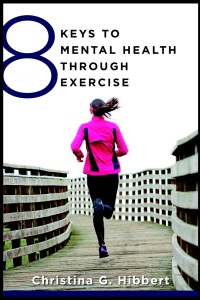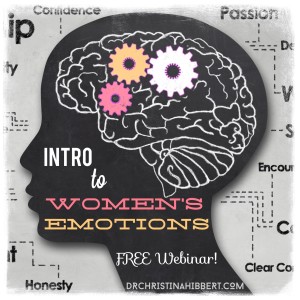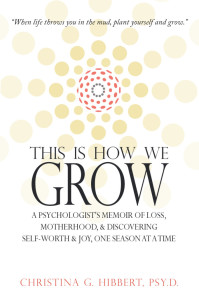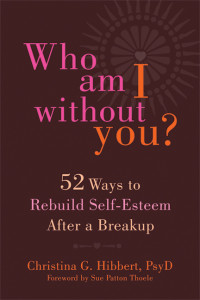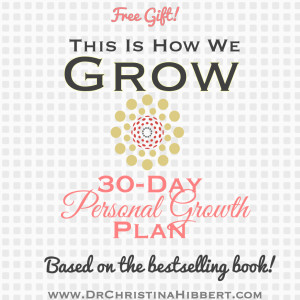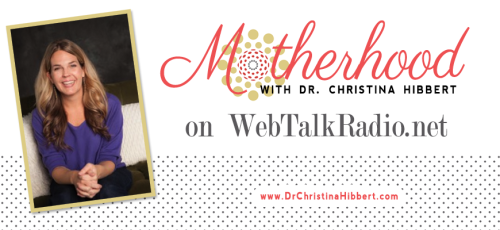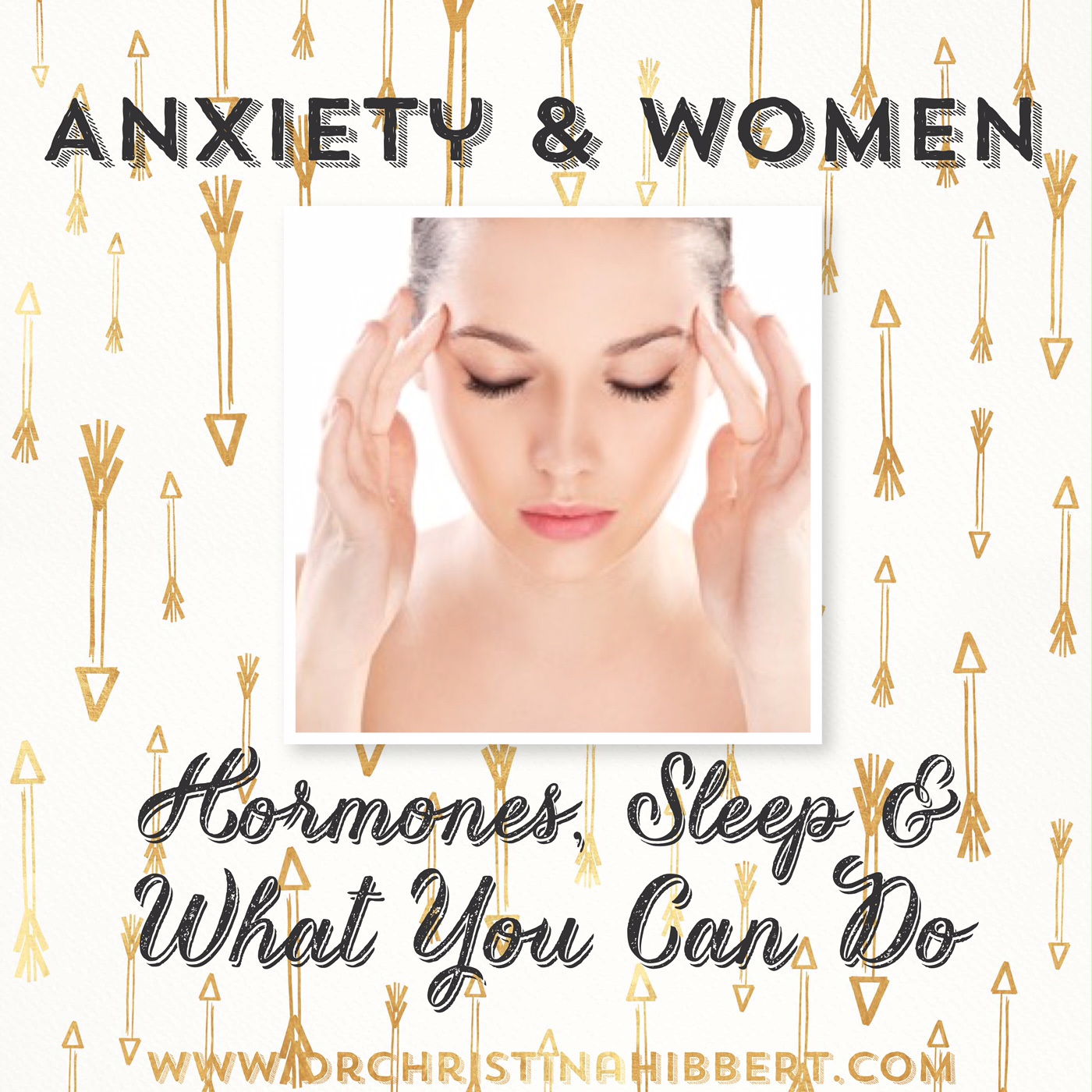
04 Feb Anxiety & Women: Hormones, Sleep & What You Can Do
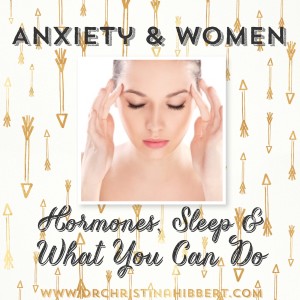 It’s 3:30 a.m. I was simply rolling over to fall back asleep, when my brain switched on like a 100-watt light bulb, and now I’m flooded with stress, worries, and thoughts of what I “need to get done” or about “my overwhelming life,” when I thought I’d put those thoughts to bed hours ago. I know I won’t fall back asleep. Still, I try. I try belly-breathing, then progressive muscle relaxation, then letting myself think for a while, to tire me out. Then, I pray. I pray for sleep. I pray that this knot of tension inside me will leave, that the fatigue my body is feeling will overpower the thoughts that hold me hostage. Finally, at 5 a.m., I get up and begin to type. It helps to get these thoughts out of me and maybe do some good for others in the process. Finally, I sneak down to the basement and exercise; I know it’s one of the best things I can do to not only distract my mind, but to provide much-needed energy for the day and hopefully later, the ability to finally rest.
It’s 3:30 a.m. I was simply rolling over to fall back asleep, when my brain switched on like a 100-watt light bulb, and now I’m flooded with stress, worries, and thoughts of what I “need to get done” or about “my overwhelming life,” when I thought I’d put those thoughts to bed hours ago. I know I won’t fall back asleep. Still, I try. I try belly-breathing, then progressive muscle relaxation, then letting myself think for a while, to tire me out. Then, I pray. I pray for sleep. I pray that this knot of tension inside me will leave, that the fatigue my body is feeling will overpower the thoughts that hold me hostage. Finally, at 5 a.m., I get up and begin to type. It helps to get these thoughts out of me and maybe do some good for others in the process. Finally, I sneak down to the basement and exercise; I know it’s one of the best things I can do to not only distract my mind, but to provide much-needed energy for the day and hopefully later, the ability to finally rest.
This is anxiety, and trust me, it’s miserable. I don’t know why I haven’t written more about it before. That’s one thought that was spinning through my mind while I wasn’t sleeping this morning—Why haven’t I written about anxiety, when it’s the predominant symptom with which I struggle? When it’s one of the most common issues for all women, for all people? (Read “I am the FACE of DEPRESSION (& Anxiety): Overcoming the Stigma”)
Anxiety & Women
It’s not only my predominant symptom: “Anxiety disorders include phobias, social anxiety, panic disorder, generalized anxiety disorder, OCD, PTSD, and separation anxiety disorder, and are considered the most commonly occurring class of mental disorders (CDC 2015)” [2].”
Anxiety is the most common mental health issue in women. Yes, more common than depression. Anxiety will affect one in three women throughout their lifetime [2], and often, depression and anxiety go hand-in-hand. Women are also twice as likely as men to develop an anxiety disorder, and symptoms tend to appear earlier in life for women [1].
What is Anxiety?
So, what, exactly, is anxiety? Clients have described it to me as, “I’m on edge all the time.” “My mind won’t shut off.” “I can’t stop thinking about everything I need to do” or “worrying about everything that could 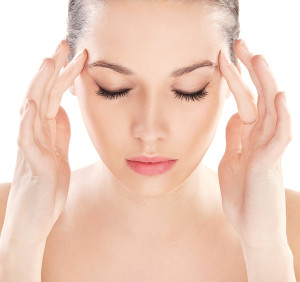 happen.” “I can’t relax;” “I’m on edge all the time.” Or, I described it, above, “I can’t sleep even though I’m exhausted: My mind is holding me prisoner.”
happen.” “I can’t relax;” “I’m on edge all the time.” Or, I described it, above, “I can’t sleep even though I’m exhausted: My mind is holding me prisoner.”
Anxiety is, first and foremost, a feeling. We need anxiety to warn us of danger or to make us to take action when something needs to get done. If something is wrong and we feel worried, stressed, or afraid, anxiety helps set off the sympathetic nervous system, raising our heart rate and blood pressure and setting off stress hormones, like cortisol, in the brain, preparing us for action, telling us, “You need to do something about this!” When we take action, or when we are able to relieve the stressor or resolve the situation, our mind is supposed to shut off, our parasympathetic nervous system returning our body to a calmer state, heart rate slowing to normal, stress hormones subsiding.
What is an “Anxiety Disorder?”
Chronic anxiety, like an anxiety disorder, however, comes from an overactive stress response. Instead of resuming a calmer state once the threat has been overcome, the parasympathetic nervous system doesn’t kick in for those with an anxiety disorder. Instead, the mind stays on, keeping the body on high alert, even when there is no actual present threat. This keeps cortisol coursing through the body, blood pressure high, and heart rate working over time. This, understandably, makes it very difficult to relax, for the brain to shut off, to sleep. In turn, poor sleep and little relaxation contribute to anxiety and depression, among other things, and the cycle continues. It’s exhausting just thinking about it!
Types of Anxiety Disorders
There are several forms of anxiety disorder, including: Generalized Anxiety Disorder (intense, pervasive anxiety), Panic Disorder (including panic attacks), Specific Phobias (or extreme fears), Social Phobia (or fear of social situations), Obsessive-Compulsive Disorder (OCD, consisting of obsessive, stress-filled thoughts and compulsions to alleviate the stress), and Posttraumatic Stress Disorder (PTSD, with a traumatic trigger, followed by re-experiencing the event, like in nightmares of flashbacks, numbing/avoidance of things associated with the event, and heightened state of arousal).
Additionally, as mentioned above, anxiety may co-occur with major depression or other mental illnesses.
Anxiety & Hormones
In women, anxiety is also a common component of hormonal shifts, like those in pregnancy, postpartum, with PMS, PMDD, or in perimenopause. In fact, many women experience the most anxiety during the years leading up to menopause; and many of these women have never experienced anxiety before!
In pregnancy and postpartum, anxiety is common, as well, with approximately 6% of pregnant and 10% of postpartum women experiencing a perinatal anxiety disorder. Approximately 10% will experience pregnancy or postpartum panic disorder (with associated panic attacks), 3-5% will experience pregnancy or postpartum OCD, and 9% will experience postpartum PTSD, usually following a traumatic childbirth.
Unfortunately, thanks to society’s “myths of motherhood,” many believe it’s “normal” for moms to feel anxious or worried, so too many mothers live with unnecessary anxiety that can make life miserable. The truth is constant anxiety is not normal, and it’s important for women to recognize their symptoms so they can seek and receive treatment to overcome the anxiety and to heal.
Anxiety, Hormones & Sleep
Anxiety is often associated with insomnia or other sleep issues. Again, this is a vicious cycle, as lack of sleep continues the cortisol and adrenaline in the body that only make anxiety worse, and vice 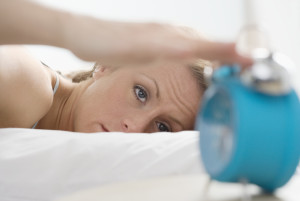 versa.
versa.
According to the National Sleep Foundation, women are much more likely report sleep issues than men, one reason being the many hormonal shifts women experience premenstrually, in pregnancy and postpartum, and during perimenopause. A few days or a week before a woman’s period starts, she may find she can’t fall asleep or, more commonly, can’t stay asleep, as I described above. As I’ve studied the link between sleep, anxiety, and hormones it’s become clear: women are much more vulnerable to sleep disturbance during times of shifting hormones, and each month those hormones shift twice! First, there’s a drop in Estrogen around day 14, or around ovulation, and then the bigger drop in Estrogen and Progesterone occurs a few days to a week before her period starts. This can make sleep feel impossible for women who are sensitive to these shifts, with terrible sleep one or more weeks every month. (For more on this, read myWomen’s Emotions blog series, parts 1, 2, and 3.)
What can You Do for Anxiety?
You don’t have to suffer, living with anxiety. Treatments are available and highly successful.
- The “gold standard” for anxiety treatment is a combination of anti-anxiety medication (including antidepressants, which also reduce anxiety) and psychotherapy. The medication works to correct the overactive brain chemistry while therapy teaches techniques and skills for how to manage daily symptoms. Either one of these treatments on their own will likely be beneficial, as well, research shows. (More on “Antidepressant or Not?” here.)
- Cognitive-behavioral therapy (CBT) is one of the most highly validated forms of therapy for treating anxiety. Research is clear: CBT may be as effective as antidepressants in treating mild to moderate anxiety and depression [2]. CBT works on changing the thoughts and beliefs associated with anxiety, thus reducing the feelings of anxiety. (For more on CBT, read “Thought Management,” parts 1 and 2 or register for my FREE webinar, “Women’s Emotions” or my “Women’s Emotions: Caring for your Brain, Hormones, & Mental Health” 3-part course)
- Learning relaxation skills, like mindfulness, deep breathing, and meditation are also beneficial in treating anxiety. Research shows these self-help techniques allow you to train your brain and body to let go and relax. Additionally, anything that helps relieve tension and stress can help–like massage, naps, quiet time, a hot bath, reading, watching a television program (not a scary one!), or time with friends and family.
- Exercise is another helpful treatment—either alone or as an addition to these other options. The benefits of exercise are proven and extensive, and for anxiety, exercise can not only work out the tension and give the mind a way to let go; it also helps the body become tired, so you’re more likely to sleep better. Though some who struggle with anxiety find cardiovascular exercise difficult, because it may mimic the feeling of anxiety (heart rate up, shortness of breath), lifting weights, doing yoga or Pilates, or very mild walking have shown incredible benefits in r
 educing symptoms of anxiety. (Read more about this, as well as strategies to make exercise work for you, in my new book, “8 Keys to Mental Health Through Exercise!” [See Coupon to save 25%, below!])
educing symptoms of anxiety. (Read more about this, as well as strategies to make exercise work for you, in my new book, “8 Keys to Mental Health Through Exercise!” [See Coupon to save 25%, below!])
- Realize anxiety is not you! Then, FEEL the anxiety. One of the most helpful things I’ve learned over the years is that I am not the anxiety. It is a feeling in my body, not me. Too often, anxiety takes over like it’s running the show—the show being your life! And too often, we let it run the show. We feel like we are the anxiety. We fight feeling it because it’s so uncomfortable and we don’t know how to handle it. Or, at least, we think we don’t. One thing you can try is to sit and FEEL the anxiety. Notice where it is in your body. Breathe as you feel it and recognize it is not you. I find it helpful to imagine the anxiety is slightly in front of me as I lean my body away from it. It reminds me I am in charge of my life; my emotions are not. As we FEEL powerful emotions, like anxiety, they truly lose their power. (Read How to FEEL Powerful Emotions & watch the related 3-Minute Therapy video, here.)
- Treat the sleep issues to treat the anxiety. If your sleep is severely affected by anxiety, it may be better to start by treating the sleep. Temporary sleep aids, including melatonin supplements, can help you finally get some rest, and just getting some sleep can help the anxiety begin to decrease. CBT can also help in treat the thoughts associated with sleep disturbances. Sometimes, there may be another sleep disorder, mental illness, or physical illness in play that’s causing your symptoms, so it’s always best to get a full physical evaluation first and talk to your doctor about what’s right for you. (Read Sleep Better, Cope Better: 6 Insomnia Causes & Cures, here.)
- Hormone Replacement Therapy (HRT) is worth looking into for perimenopausal/ menopausal-related anxiety, and some women benefit from hormone therapies for perinatal anxiety disorders, PMS and PMDD. It can be tricky getting hormone therapies right, however, and many women are sensitive to hormone-based treatments, which may make symptoms worse, at least at first. It is therefore important that you work with a knowledgeable doctor about the best therapies for you. S/he can help monitor your mind and body’s response to hormone treatments as well as your progress. It may take some time to get it right, but when you find a treatment that works, it’s well worth it.
- Avoid/limit caffeine and other stimulants. If it’s your routine to wake up with a heavy dose of caffeine and/or to keep it pumping throughout the day, you may need to tackle that habit first. Caffeine and other stimulants only exacerbate anxiety. If you want the anxiety to diminish, first the caffeine has to vanish.
- Learn all you can about your body, brain, hormones, and emotional health. Knowledge is power, especially when it comes to your own body, mind, and spirit. Learning about how your brain, life experiences, menstrual cycle, and hormones combine to create mental health or illness will allow you to intervene and take charge or your emotional wellbeing.My FREE “Women’s Emotions: What You Were Never Taught about your Brain, Hormones, & Mental Health” webinar is a great place to start, along with my Women’s Emotions blog series, parts 1, 2, and 3. (For those who want more in-depth understanding and help, register for my 3-part “Women’s Emotions: Caring for your Brain, Hormones, & Mental Health to Overcome, Become, & Flourish” online course.)
You can beat Anxiety!
Bottom line: you don’t have to live with constant anxiety. Yes, it will take work. Yes, it will take time. Yes, it will take patience–with yourself, and with others. But anxiety is not a normal part of life—for women, for moms, for men, for dads, for kids, for anyone.
If you’re suffering from any form of anxiety, please seek help. Talk to your doctor or mental health provider and ask what treatments might be best for you. And if you’re not finding the right answers, keep searching and asking until you do.
Don’t let anxiety get the better of you. Start right now. Breathe. Deeply. In and out. And again–in and out. Then, repeat after me, “This anxiety is not me. If I seek help and let it in, I can, and will overcome this anxiety, one breath, one moment, one step at a time.”
Do you struggle with anxiety? What is most helpful for you in treating symptoms of anxiety? What lessons have you learned that you can share with others experiencing the same thing? Please leave a comment, below, and let us know.
My NEW book is almost here! “8 Keys to Mental Health Through Exercise“
Pre-Order on Norton.com and SAVE 25% plus free shipping, with the code HIBBERT,
or order on Amazon or Barnes & Noble!
Take my FREE Webinar, “Intro to Women’s Emotions,” or register for my 3-part Webinar Course on “Women’s Emotions: Caring for your Brain, Hormones, and Mental Health to Overcome, Become & Flourish!’
Be sure to check out my bestselling, award-winning memoir, This is How We Grow!
Available at Amazon or Barnes & Noble!
My latest book, “Who Am I Without You,” is available now at
Target, Amazon, Barnes & Noble, New Harbinger, or your local bookseller!
Join my “This is How We Grow” 30-Day Personal Growth Plan!
Listen to my latest episode of “Motherhood” radio–on demand/download the episode at WebTalkRadio.net, and/or visit iTunes to subscribe!
Let’s Connect!
SUBSCRIBE, above, “Like” me on Facebook Dr. Christina Hibbert; This Is How We Grow, & follow me on Twitter, Pinterest, & Instagram!
Related Posts/Articles:
Becoming the Butterfly: The Power of Personal Transformation
“My Kids Are Driving Me Crazy!” (again) Why Parenting is so Darn Tough
New Year, New You! Top 6 Strategies for Personal Growth & Change
“This is How We Grow” 30-Day Personal Growth Plan–My New Year’s Gift to You!
New Year’s Goal-Setting: 5 Steps for Personal Growth Success
Beyond Resolutions: Discover your New Year’s Vision
What I’ve Learned about Personal Growth from a Decade of New Year’s Themes
[1] Anxiety and Depression Association of America. (2016). Anxiety and Women: Facts.
[2] Hibbert, C. (2016). 8 Keys to Mental Health Through Exercise. W.W. Norton Publishing: New York, NY.

